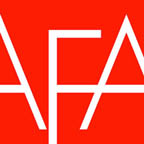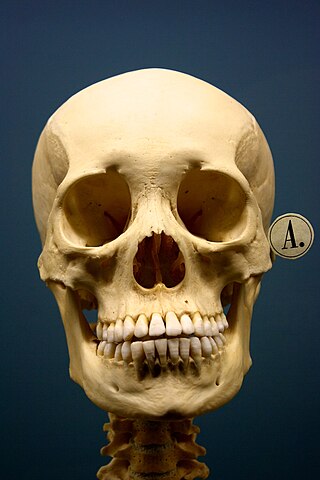
The conservation and restoration of cultural property focuses on protection and care of cultural property, including artworks, architecture, archaeology, and museum collections. Conservation activities include preventive conservation, examination, documentation, research, treatment, and education. This field is closely allied with conservation science, curators and registrars.

Shirin Neshat is an Iranian photographer and visual artist who lives in New York City, known primarily for her work in film, video and photography. Her artwork centers on the contrasts between Islam and the West, femininity and masculinity, public life and private life, antiquity and modernity, and bridging the spaces between these subjects.

'Shabnam Tolouei is an Iranian actress, theatre director and playwright. She is currently forbidden from working in Iran by the government because of her religion, the Baháʼí Faith, which is subject to state sanctioned persecution. Since December 2004 she is living in Paris, France. and became naturalized French citizen in 2019.
Archaeological ethics refers to the moral issues raised through the study of the material past. It is a branch of the philosophy of archaeology. This article will touch on human remains, the preservation and laws protecting remains and cultural items, issues around the globe, as well as preservation and ethnoarchaeology.

Cultural heritage is the heritage of tangible and intangible heritage assets of a group or society that is inherited from past generations. Not all heritages of past generations are "heritage"; rather, heritage is a product of selection by society.
Marcello Dantas is one of the main figures in the convergence of art and technology in Brazil.

Repatriation is the return of the cultural property, often referring to ancient or looted art, to their country of origin or former owners.
Sussan Deyhim is an Iranian-American composer, vocalist, performance artist, and activist. She is internationally known for her invention of a unique sonic/vocal language. LA Times quotes her as "One of Iran's most potent voices in exile".
The antiquities trade is the exchange of antiquities and archaeological artifacts from around the world. This trade may be illicit or completely legal. The legal antiquities trade abides by national regulations, allowing for extraction of artifacts for scientific study whilst maintaining archaeological and anthropological context. The illicit antiquities trade involves non-scientific extraction that ignores the archaeological and anthropological context from the artifacts.

The American Federation of Arts (AFA) is a nonprofit organization that creates art exhibitions for presentation in museums around the world, publishes exhibition catalogues, and develops education programs. The organization’s founding in 1909 was endorsed by Theodore Roosevelt and spearheaded by Secretary of State Elihu Root and eminent art patrons and artists of the day. The AFA’s mission is to enrich the public’s experience and understanding of the visual arts, and this is accomplished through its exhibitions, catalogues, and public programs. To date, the AFA has organized or circulated approximately 3,000 exhibitions that have been viewed by more than 10 million people in museums in every state, as well as in Canada, Latin America, Europe, Asia, and Africa.
The National Administration of Cultural Heritage is an administrative agency affiliated with the Ministry of Culture and Tourism of the People's Republic of China. It is responsible for the development and management of museums as well as the protection of cultural relics of national importance.

The Peru–Yale University dispute was a century-long conflict between the government of Peru and Yale University about the rightful ownership of Inca human remains and artifacts from Machu Picchu, an ancient Inca site high in the Peruvian Andes active c. 1420–1532. In the several years following his re-discovery of Machu Picchu in 1911, Yale explorer Hiram Bingham III removed thousands of objects – including pottery, stone tools, and human bones – from the archaeological site and brought them to New Haven, Connecticut. The circumstances of these transfers were disputed, with some, including Bingham, claiming that Yale agreed to borrow the artifacts for a period of 18 months to conduct studies. Peru attempted to regain the collection in the 1920s, but Yale resisted. Tensions rose between 2006 and 2010 with a lawsuit, activism by Peruvians and Yale alumni, and a plea to then–U.S. President Barack Obama by then–Peruvian President Alan Garcia. On November 19, 2010, Peru and Yale reached an agreement that the remains and artifacts would be returned. In early 2011, Yale and University of Cusco (UNSAAC) signed a further agreement that the two institutions would partner to create a museum and research center in Cusco. The museum, the Museo Machu Picchu, was opened to the public in November 2011. The collection is regarded by experts to be among the most valuable collections of Inca artifacts.
Lina Bertucci is an American subculture artist who specializes in photography and film.

Shoja Azari is an Iranian-born visual artist and filmmaker based in New York City. He is known for his films and multimedia installations.

The conservation and restoration of human remains involves the long-term preservation and care of human remains in various forms which exist within museum collections. This category can include bones and soft tissues as well as ashes, hair, and teeth. Given the organic nature of the human body, special steps must be taken to halt the deterioration process and maintain the integrity of the remains in their current state. These types of museum artifacts have great merit as tools for education and scientific research, yet also have unique challenges from a cultural and ethical standpoint. Conservation of human remains within museum collections is most often undertaken by a conservator-restorer or archaeologist. Other specialists related to this area of conservation include osteologists and taxidermists.
Digital repatriation is the return of items of cultural heritage in a digital format to the communities from which they originated. The term originated from within anthropology, and typically referred to the creation of digital photographs of ethnographic material, which would then be made available to members of the originating culture. However, the term has also been applied to museum, library, and archives collections, and can refer not only to digital photographs of items, but also digital collections and virtual exhibits including 3D scans and audio recordings. Intangible cultural heritage, which includes traditional skills and knowledge, can also be digitally repatriated to communities.

Looking for Oum Kulthum is a 2017 internationally co-produced drama film about the Egyptian diva Umm Kulthum, directed by Shirin Neshat in collaboration with Shoja Azari. It was screened in the Contemporary World Cinema section at the 2017 Toronto International Film Festival.

The Voice of a Woman (VOW) is an organization founded by Maureen A. Bryan in 2009, as a platform for the works of women filmmakers, artists and thought leaders internationally. The Voice of a Woman Festival, Awards, Talks and Masterclasses are presented each year in London, New York and Cannes.

The Restitution of African Cultural Heritage. Toward a New Relational Ethics is a report written by Senegalese academic and writer Felwine Sarr and French art historian Bénédicte Savoy, first published online in November 2018 in a French original version and an authorised English translation.
Haim Bresheeth-Žabner is an Israeli filmmaker, photographer, academic, and activist known for his critical work in film studies, media analysis, and his activism focusing on Israeli policies towards Palestinians, cultural studies, and the study of the Middle East conflict. He is known for being a critic of Israel and being opposed to the idea of zionism.












